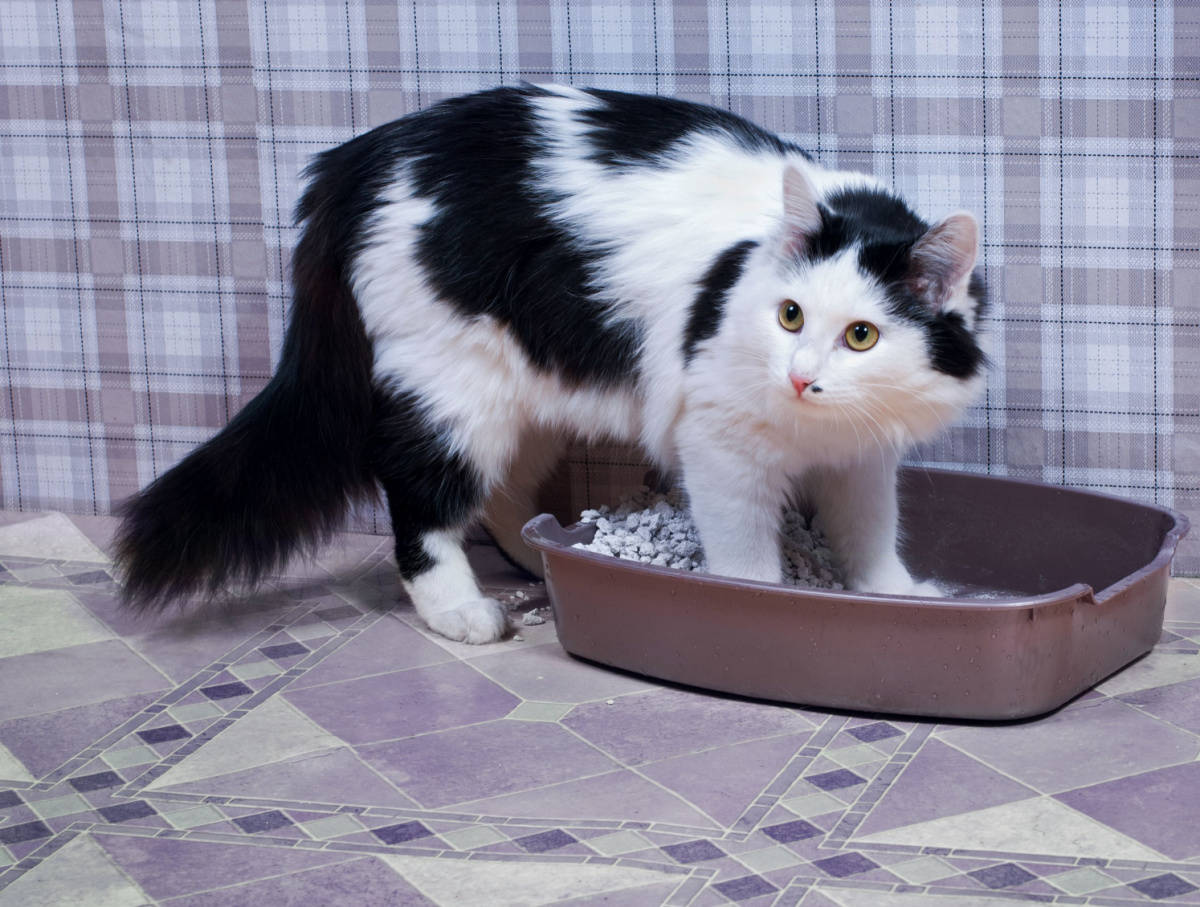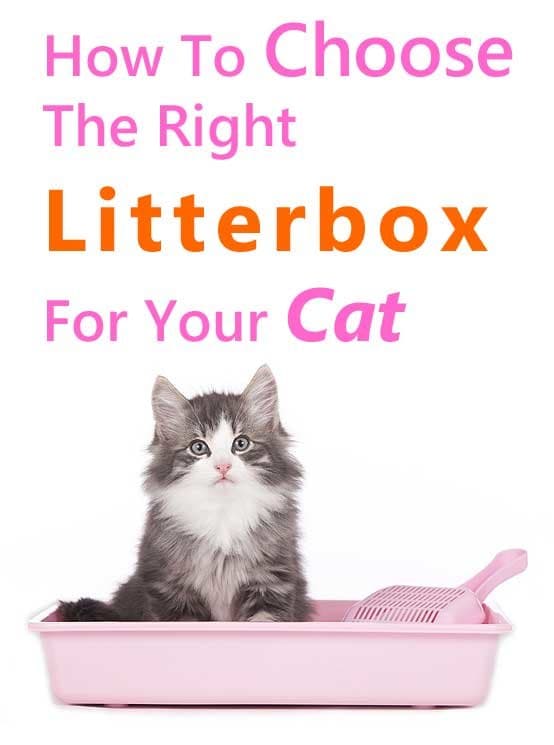Choosing the right litterbox for your feline friend might seem straightforward, but it's actually a decision that requires careful thought.
First-time cat owners are often taken aback by the vast array of choices available, each with its own set of benefits and drawbacks.
Litterboxes come in all shapes, sizes, and designs, from open to covered, disposable to high-sided, and even automated.

As you consider your options, it's important to consider the needs and preferences of both your cat and yourself.
In this article, we will break down the different types of litterboxes and help you make an informed choice for you and your furry companion.
Finding The Right Litterbox
The quest for the right litterbox can be overwhelming due to the many options available.
While there are numerous factors to consider, such as size, ease of cleaning, and accessibility, the primary choice you'll face is between open and covered litterboxes.
Let's take a closer look at each type and its respective subcategories to help you make an informed decision.
1. Open Litterboxes
This is the most basic and intrinsic design for a litterbox. An open box where kitty litter can be poured for the cat to dig in and cover.
Click here to see this open litterbox on Amazon.
It must be deep, large, and easy to clean.
It is so simple in its design that some of the members at TheCatSite.com use plain yet sturdy storage boxes such as the ones made by Rubbermaid and Sterilite.
Disposable Litterbox
These are open litterboxes made of disposable materials, often cardboard or hardened recycled paper.
Click here to see this disposable litterbox on Amazon.
The idea is to use them with non-clumping litter, and when it's time to change the entire contents, you just pick up the box and chuck it away.
No need to wash the box itself or use liners. These boxes can be scented or may have baking soda as an additional ingredient to help with odor control.
High-Sided Litterbox
These are still open litterboxes, but they come with extra-tall sides to prevent the cat from kicking litter out of the box, as some cats are prone to do.
Click here to see this high-sided litterbox on Amazon.
Again, you could use a regular storage box and get one that's tall enough for your cat's digging practices.
Designated high-sided litterboxes usually have a U-shaped entry point, making it easier for the cat to enter the box without jumping.
It could be an important feature for older or arthritic cats. A regular storage box can be cut on one side to provide such an entry point.
Corner Litterbox
This is simply a triangular-shaped box intended for use in the room's corner. It can be high-sided or of regular height and even be a covered box.
Click here to see this corner litterbox on Amazon.
Its main advantage is aesthetic, in case you decide to place the box in the corner of a room.
2. Covered Litterboxes
As the name implies, the covered litterbox has a cover, or a hood, turning it into a closed box with an opening at the front.
Click here to see this covered litterbox on Amazon.
The opening is usually a flap door allowing Kitty to enter and exit at will while keeping the litterbox space cocooned within its plastic walls.
Some people like this because they think it's a way to keep unwanted odors inside the box, but this is a dangerous line of thought.
Essentially, it means you don't mind if the inside of the box stinks. It shouldn't. How would you like to use a dirty, stinky bathroom? Your cat wouldn't either.
If you choose a covered box, ensure it is as clean as an open one.
Consider removing the flap to avoid trapping odors inside, which can discourage cats from using the box. You should also make sure it is large enough for your cat to use.
SIGN UP FOR THECATSITE'S EMAIL UPDATES >
3. Top-Entry Litterbox
Some covered boxes have their entries located at the top of the box. Essentially, this is a lidded box with a round hole in the lid allowing the cat to enter and exit the box.
Click here to see this top-entry litterbox on Amazon.
The main difference between this and an ordinarily covered litterbox is that the cat has to jump in order to enter the box. It's not a good fit for kittens, elderly cats, or arthritic cats.
4. Automated Litterboxes
Automated litterboxes are labor-saving devices. Simply put, they sift the litter for feces and urine clumps on their own.
Click here to see this automated litterbox on Amazon.
Some of these machines operate the cleaning process according to a set schedule, up to once an hour, while others use sensors to check for cat visits and clean once the cat has left the box.
Automated litterboxes can be an excellent solution for people who are too busy or can't clean the box regularly.
They are fairly expensive though, and require some maintenance. To help you choose the right one for you, we prepared this guide: How To Choose The Best Automatic Litter Box For Your Cat.
So, Which Litterbox Should I Choose?
All litterboxes have some common features. All cats prefer larger boxes over smaller ones. Remember to switch to a larger box as your cat grows.
The box should be big enough for a cat to turn around comfortably. Extra space lets your cat find clean spots and avoid soiled corners.

The box should be deep enough for at least three inches of litter. To choose the right box for your cat and you, consider the following:
1. Accessibility
Finding the right litterbox means ensuring it's always within easy reach for your cat. This is especially crucial for kittens, senior cats, or those with disabilities.
They shouldn't have to climb stairs, jump, or navigate obstacles to use the litterbox.
Place the box in a location that your cat frequents and avoid moving it around, as this can confuse your feline friend.
The right litterbox is one that is easily accessible to your cat at all times.
2. Safety
The right litterbox should make your cat feel safe while using it. This is particularly important in multi-pet households or where there are issues with bullying between cats.
An open litterbox lets your cat see who's approaching and quickly leave if they feel threatened.

Make sure the litterbox isn't in a corner or a dead-end, as this can make your cat feel trapped.
Position the box in an area with multiple escape routes, allowing your cat to easily exit in different directions.
2. Cleanliness
Keeping the litterbox clean is essential for your cat's health and comfort. Choose a box that's easy for you to maintain.
If you need a visual or olfactory reminder to clean the box, an open litterbox is a good choice, as it allows you to see and smell the contents.
On the other hand, if your schedule is hectic and you can't clean the box regularly, an automated self-cleaning box could be a smart investment.
Regardless of the type, scoop out waste daily, change the litter regularly, and wash the box at least once a month to prevent odors and ensure a clean environment for your cat.
Why Choose Just One?
Our guide titled "How Many Litterboxes Should You Have?" says that having at least two litterboxes in a household is a good idea.
There's no reason to stop at two boxes if you have more than one cat. The rule of thumb is: The number of litter boxes should equal the number of cats plus one.

They don't need to be identical though. Several litterboxes allow you to experiment and see if your cats have any preferences.
If one of the boxes stays unused for a long period of time, your cats are probably asking for a replacement. Otherwise, keep the boxes varied to suit their various needs.
Comments? Leave them using the form below. Questions? Please use the cat forums for those!
SIGN UP FOR THECATSITE'S EMAIL UPDATES >
Help us to inform others about this matter by just simply pinning the image below on your social media. This is for free because sharing is caring!

Read more on:
The Litterbox: What Every Cat Owner Needs To Know
How To Solve Litterbox Problems In Cats: The Ultimate Guide
Note: We may get commissions for purchases made through links on this page.











7 comments on “How To Choose The Right Litterbox”